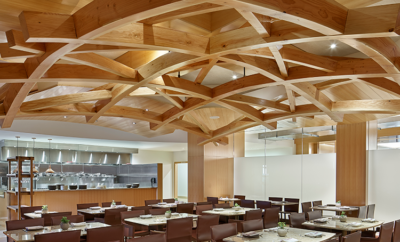 COURTESY PHILLIPS/PHILLIPS.COM
COURTESY PHILLIPS/PHILLIPS.COM
Design
Lighting the Way: The Best Early Modern Lamps
When we consider modern design, the emphasis is often on the decade or so following World War II. The reasoning, which is justified, can be condensed into a few critical ideas, including the necessity of rebuilding (and re-furnishing) Europe, the enhanced abilities and possibilities of mass-production, and a general philosophical inclination toward the new and the future. Too often, it’s as if there is an invisible frontier that excludes earlier objects.
In fact, early modernism is ripe for discovery. Many of the lights fixtures featured here are remarkably under-appreciated or even unknown, even though their aesthetic innovations were repeatedly duplicated or interpreted in succeeding decades, up to today. I suspect that even readers familiar with certain models will be surprised at how early their designs date. None of the designers are obscure, and their contributions to either design or architecture of the twentieth century is considered. Several of the lights boast new technologies (notably bulbs), materials, or production possibilities of the day.
Perhaps the key factor uniting the examples featured is that they are still remarkable today, whether isolated on a museum plinth or in a contemporary interior. They all reflect a fierce rejection of the reigning styles of their era and the assertion of a new aesthetic sensibility, often accomplished “simply” by dismissing ornamentation. All have an overt sculptural presence even if the forms are simple, the materials are modest, or the surfaces are unadorned.
Of course this list is highly subjective and certainly not exhaustive. In the end, it is about a desire to retreat behind the 1945 frontier and illuminate a group of iconic, or deserve-to-be-iconic, light fixtures from the first half of the twentieth century.
Gio Ponti (1891–1979) Bilia lamp 1931

COURTESY PHILLIPS/PHILLIPS.COM
GIO PONTI IS ARGUABLY one of the twentieth century’s most recognized design superstars. His accomplishments in several overlapping disciplines (including furniture design, entire interiors, architecture, and journalism) have cemented his reputation as Italy’s preeminent force of modernist design. However, much of his reputation is based on his postwar activity: his collaboration with Piero Fornasetti in the late 1940s; his Pirelli Tower, completed in Milan in 1958; the Superleggera chair first produced in 1957; the Parco dei Principi Hotel in Sorrento, designed in the early 1960s; and the list goes on. Ponti was certainly relevant in the 1920s and ‘30s in several creative realms, including architecture, porcelain (working for Manifattura Richard-Ginori), design journalism (as editor of Domus magazine), and glass (working for Luigi Fontana & Partners and then FontanaArte). With Ponti on board as art director, with the goal of revitalizing/modernizing the firm’s output, FontanaArte debuted several successful designs in the early 1930s. However, I am partial to the surprising and delightfully simple Bilia lamp, which could be misread as German, Dutch, or even Scandinavian. Ponti reduced the lamp’s essential elements to two completely unadorned geometric elements—a cone and a sphere.











